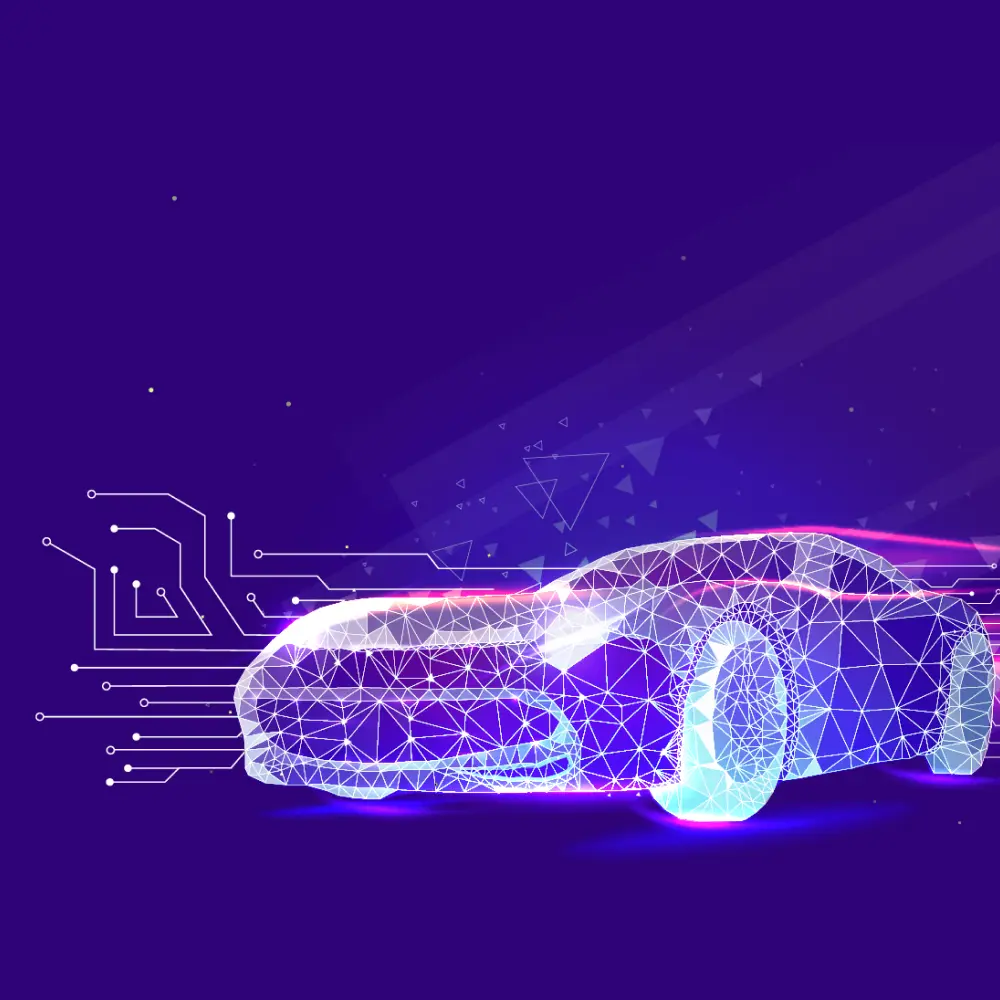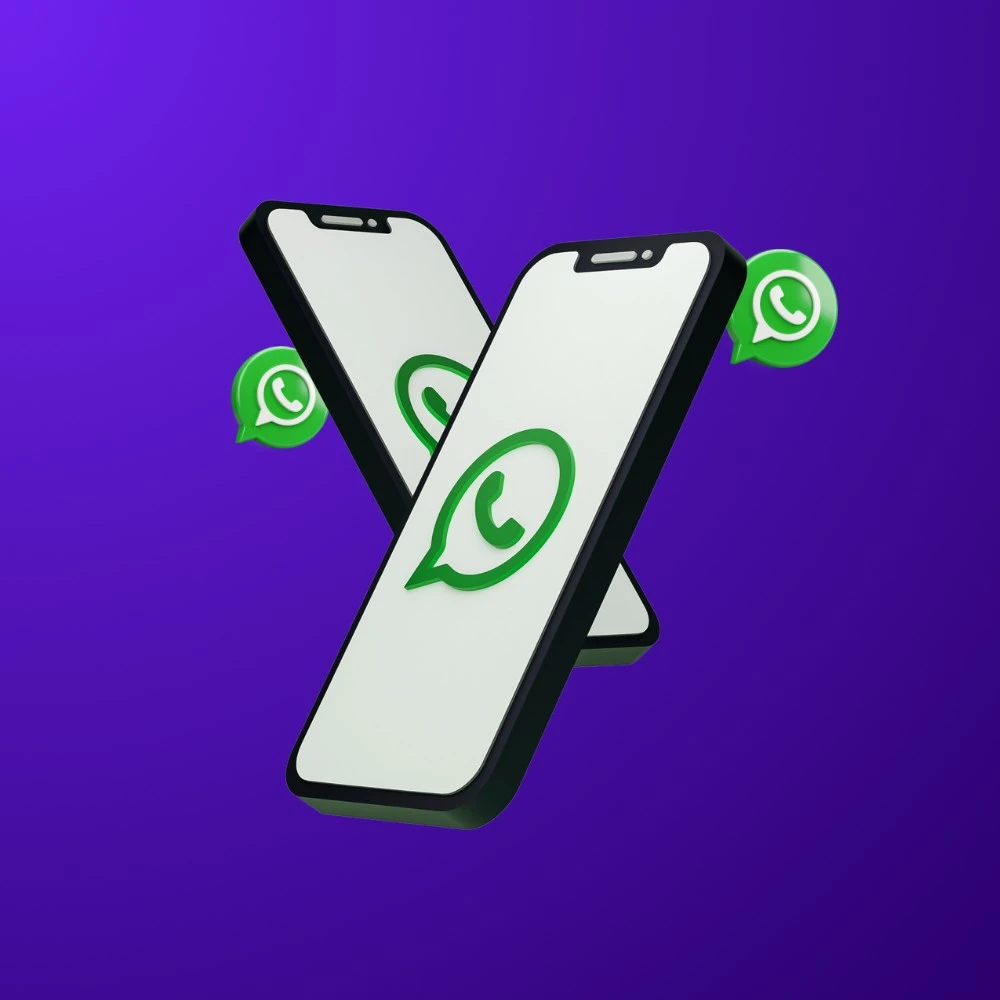The world of virtual reality is completely different today compared to just a few years ago. From an enthusiast’s hobby and only a “tech nerd’s obsession”, virtual reality has become a mainstream occurrence over the past couple of years. VR headsets, the gateway to the world of VR, are more accessible and widely available now than ever before. There are offerings from a number of tech manufacturers from across the globe. Well-received VR headsets, such as the Oculus Quest, the HTC Vive series and the Playstation VR headset have been around for quite some time. However, the recent arrival of a VR headset from the largest tech company in the world – the Apple Vision Pro – has shaken things up and reinvigorated the industry.
Today, we are going to pit the newly launched Vision Pro against the best VR headsets available, including the second-generation Playstation VR from Sony, Pico Interactive PICO 4, and what Meta claims to be their best VR product yet, the Meta Quest 3.
Before we get started, you need to know that there are different types of VR headsets. Based on the connection type, they can be categorized into standalone headsets, tethered headsets, and mobile headsets. Standalone headsets are the most complicated and sophisticated of them all; they pack in the computer and the battery within the headset itself. Tethered headsets draw power from a high-end PC or console, which makes them very powerful and capable. Mobile headsets are the simplest; as the name suggests, they rely on the display of your phone and its sensors to provide a VR experience.
Keep in mind that every one of the VR headsets in this comparison is better than the rest at some particular thing. For instance, if you are into gaming and already own a PS4 or PS5, the PSVR 2 is your only logical option. Similarly, if you’re deep into the Apple ecosystem or even use an iPhone or Mac, the Apple Vision Pro is your best bet.
Introducing The Latest VR Headsets
Meta Quest 3
The Meta Quest 3 VR headset was unveiled to the public at the 2023 Meta Connect Event. The Quest 3 brings quite a lot of upgrades compared to its predecessor, the Quest 2, including a higher resolution display, better performance and innovative Meta Reality tech while also trimming down its dimensions.
The Quest 3 focuses on improving mixed reality (MR) experiences. For those who don’t know, MR blends the physical reality of the user with virtual elements. Quest 3’s improved Qualcomm Snapdragon XR2 Gen 2 processor coupled with 8 GB of onboard RAM does all the heavy lifting here, allowing the headset to understand your physical space and respond to objects in a realistic and immersive manner. Users of the Quest 3 can navigate their space, be it a room or somewhere outdoors, in natural and intuitive ways that were simply not possible with the last generation’s technology.
Put on the Quest 3 and you’ll be greeted with two incredible displays, one for each eye. The high-resolution LCDs boast a 2064 by 2208 pixels resolution and operate at a 120 Hz refresh rate to eliminate motion blur and lag. The pancake lenses used in the Quest 3 eliminate the screen door effect and also allow a higher field of view than most of its competitors; 110 degrees horizontal and 92 degrees vertical to be precise. The passthrough experience has also been notably improved with newer colour cameras and dynamic spatial tracking.
As per Meta’s claims, the Qualcomm Snapdragon XR2 Gen 2 inside the Quest 3 can deliver double the graphical processing power of its predecessor, the Quest 2. But what matters more is avenues to use that processing power. Thankfully, Quest 3 is solid on this front. The headset is compatible with Meta’s wide-ranging catalogue of more than 500 games, applications and experiences specifically for the Quest platform, with dozens lined up for launch.
Along with the headset itself being 40% slimmer than its predecessor, the controllers also have been completely revamped for its third iteration. The Touch Plus controllers are noticeably more streamlined and come with an ergonomic form factor. They have reduced weight, partly due to the tracking rings being removed.
However, the Quest 3 also has some glaring omissions. The lack of OLED displays is a pretty big one. The battery life also leaves a lot to be desired. And some enthusiasts will be turned away from the fact that having a Meta account is mandatory to use and operate this headset. This is especially a concern at a time when Meta is under scrutiny for some shady data privacy practices.
Price: $499 for the 128 GB variant, $649 for the 512 GB variant
Release date: October 2023
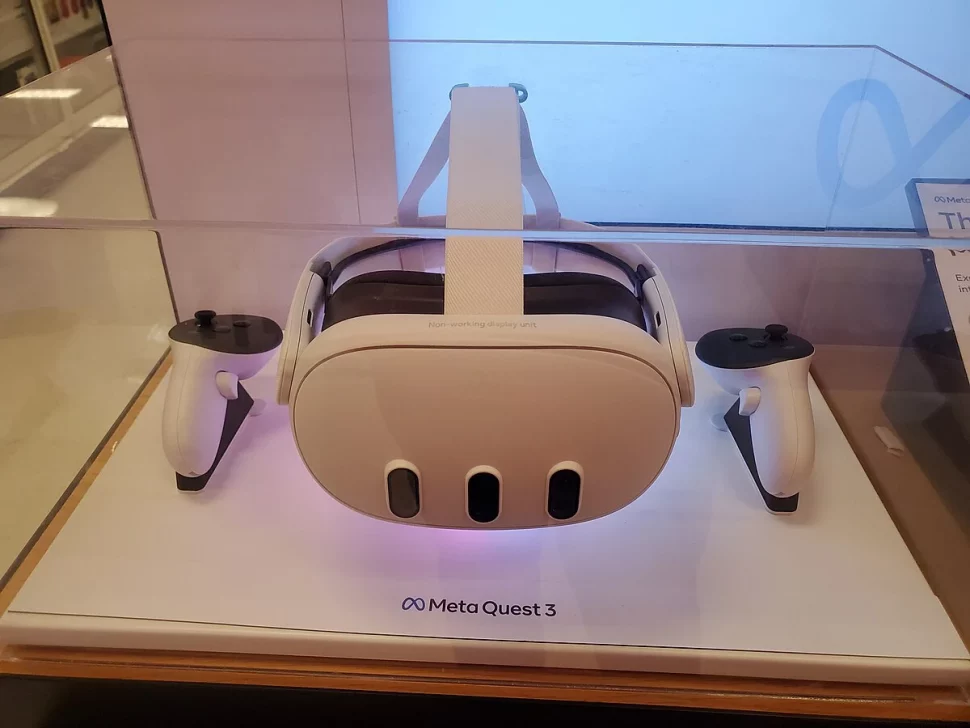
Pico 4
Pico 4 is the fourth generation of VR headsets from Pico Technologies and ByteDance. It is powered by the same Qualcomm Snapdragon XR2 chip that powered the Quest 2 with 8 GB of LPDDR4 RAM and is the perfect entry-level VR headset for many.
Similar to the Quest 3, the Pico 4 employs pancake lenses in each eye, with an even higher resolution of 4320 by 2160 pixels per eye. This translates to remarkable clarity and a very crisp viewing experience. The tiny displays have been tuned to remove chromatic aberration and ghosting issues.
The Pico 4 has been designed by keeping comfort in mind. At just 295 grams, it’s noticeably lighter than both the Quest 3 and the Vision Pro. What also helps is that it comes with an easy wheel adjustment mechanism and a nose pad. The nose pad relieves any discomfort the wearer might feel on the cheekbones. A motorised IPD adjuster is also present; what’s great is that the IPD is synced with the OS so it can throw a warning when the lenses are physically too close to your eyes.
What makes Pico 4 a surprisingly solid headset for its price range is the implementation of a full-color passthrough system. The passthrough also enables some cool AR tricks for that extra wow factor! As for battery life, it can run for over 2 hours on a single charge. That is pretty good as far as VR headsets go.
Pico 4 runs on its own proprietary software. The OS integrates easily with Steam, which means that a lot of popular VR titles from Steam run in this headset out of the box. A wireless PC connection makes productivity tasks easy, although for gaming, connecting to a PC with the included Type-C cable is the best option.
What really holds Pico 4 back is its limited availability worldwide. Reviewers also found the headset to be a bit too front-weight, and it cannot keep up with wireless streaming for a prolonged time. As far as drawbacks go, there’s not much else to complain about with the Pico 4
Price: €429 for the 128 GB variant, €499 for the 256 GB variant
Release Date: October 2022
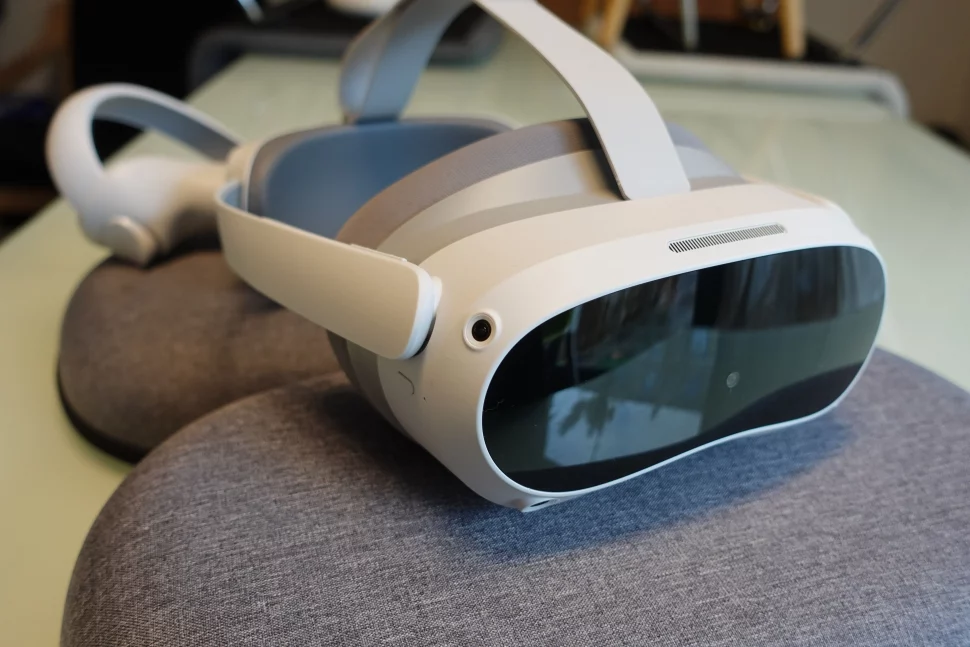
PlayStation VR 2
Although the Original PSVR was not a massive commercial success, it paved the way for how console games were integrated and even migrated to a dimension of VR. The PSVR 2 is Sony’s second attempt at a VR headset specifically for the PlayStation (in this case, the PlayStation 5), and it is an enormous leap from its predecessor in every possible way. What’s changed? Everything.
Gone are the Move controllers from the PSVR, those have been replaced with the newer and better Sense controllers. The external camera and processor box are also absent. Now you can just plug the headset directly into your PS5. The 4K OLED displays also double the resolution: up from 960 by 1080 pixels in the PSVR to 2000 by 2040 pixels. The higher resolution displays also bring support for viewing HDR content, along with a wide 110-degree field of view and a 90 to 120 Hz refresh rate.
Although the PSVR 2 looks pretty bulky at a glance, Sony has tweaked a lot of the hardware to make it comfortable. The lens module on the inside is paired with a sliding mechanism for more precise optical adjustment. The headband has also been reimagined for comfort; a large dial has been added to make the headset sit tighter (or looser) in your head. All of these changes, along with a more balanced weight distribution, make for a comfortable VR headset suited for long hours of gaming.
The PSVR 2 being a tethered headset, skips the powerful custom chips of the other headsets in this list and draws power from the console. However, a custom MediaTek chip handles all the built-in eye-tracking and hand-tracking features.
Where the PSVR 2 shines the most is its extensive library for VR games. There are a lot of games to choose from, each with a different take on VR gaming. Beat Saber and Tetris make a return and new, high-fidelity titles such as Horizon: Call of the Mountain, Resident Evil: Village and Gran Turismo 7 showcase what is really possible with the headset.
One sore apple with the PSVR 2 is that the only way you can experience this headset is by connecting to a PS5. To add to that, the headset costs more than the console itself. All combined, it becomes an expensive affair. Not to mention the eventual containment within the PlayStation ecosystem.
Price: $549 / €599
Release Date: February 2023
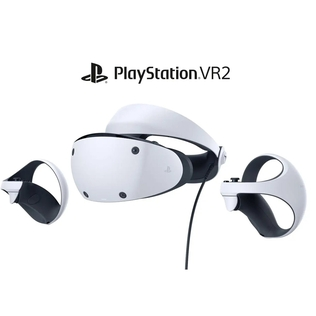
Apple Vision Pro
The Apple Vision Pro is the tech giant’s first step in the virtual reality space. However, Apple has carefully avoided terms such as VR and AR, and has described the device as a “spatial computer”. But let us reiterate that even though Apple is reluctant to promote the Vision Pro as a VR product, it is essentially a VR headset.
Packing decades of innovation and R&D, the very recently released Vision Pro certainly stands out from the pack of VR headsets. The hardware of the Vision Pro embodies Apple’s sleek, minimal design language, and the operating interface is a mix of iPad OS with glassy, translucent elements thrown around.
Things get interesting when you put on the headset though. The show-stopper of the Vision Pro is its displays. They are cutting-edge micro-OLED displays with a 7.5‑micron pixel pitch and a 3660 by 3142 pixels resolution. Combine this with a full-color passthrough and you’ve got arguably the best visual experience on any VR headset to date. All of these display muscles make Vision Pro one of the best personal multimedia devices that money can buy right now.
The Vision Pro brings a lot of firsts to the VR headset space. First of all, it is the first VR headset that can capture and playback spatial or 3D photos and videos without any external hardware. It is also the first VR headset to implement iris-scanning for secure and encrypted biometric authentication, which Apple named OpticID.
Controlling the Vision Pro is easy, you just look at things with your eyes and click it by tapping your fingers. This is achieved with a dozen cameras and scanners scattered all around the front of the Vision Pro. The 2 primary capture cameras pack in 6.5 stereo megapixels each. What sets Vision Pro apart from the rest is the enormous collection of Vision-Pro optimized apps and games available on the App Store right from launch day. Plus, the headset can natively run even unoptimized iOS and iPadOS apps. It is powered by the Apple M2 desktop-class processor, along with an R1 motion chip.
Vision Pro is a first-generation product, while the other headsets on this list are more mature iterations. This fact, along with its technological innovations, makes the Vision Pro really expensive for a VR headset. Also, Vision Pro is extremely dependent on Apple’s Closed Ecosystem; that means you cannot fully take advantage of the Vision Pro if you don’t own other Apple Products.
Price: Starting from $3499, optical inserts cost extra
Release date: February 2024
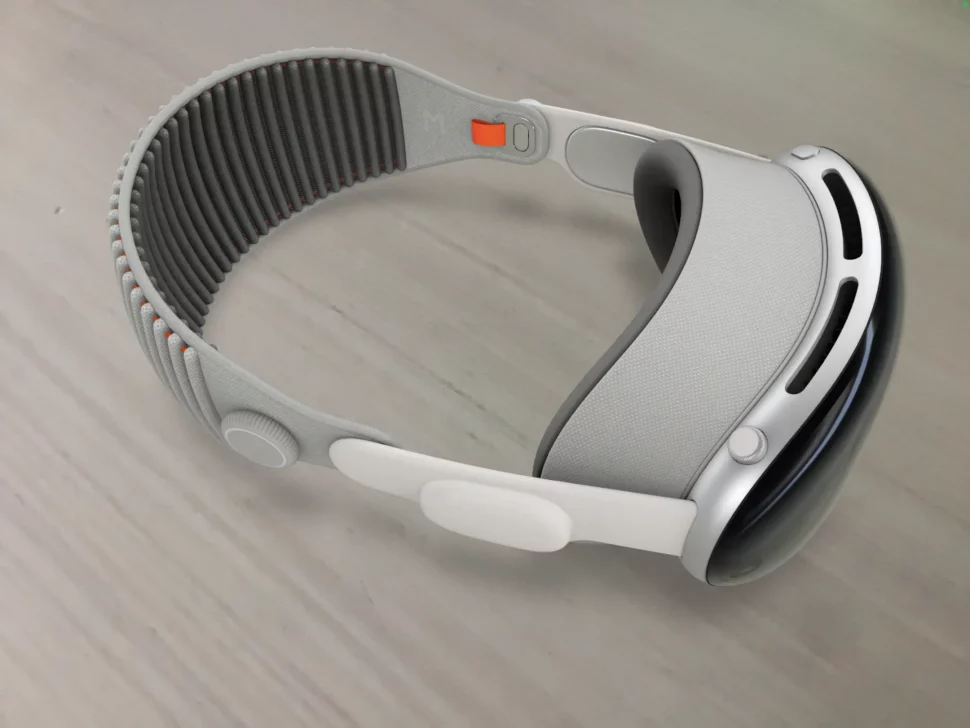
Meta Quest 3 vs Pico 4 vs PSVR 2 vs Apple Vision Pro: A Comparative Analysis Of The Latest VR Headsets
| Aspect | Meta Quest 3 | Pico 4 | PlayStation VR 2 | Apple Vision Pro |
| Release Date | October 2023 | October 2022 | February 2023 | February 2024 |
| Processor | Qualcomm Snapdragon XR2 Gen 2 | Qualcomm Snapdragon XR2 | Custom MediaTek chip | Apple M2 + R1 motion chip |
| RAM | 8 GB | 8 GB LPDDR4 | PS5 dependent | 16 GB unified memory |
| Display Resolution | 2064 x 2208 pixels | 4320 x 2160 pixels per eye | 2000 x 2040 pixels | 3660 x 3142 pixels |
| Display Type | LCD | Fast LCD | OLED | Micro-OLED |
| Refresh Rate | 120 Hz | Up to 90 Hz | 90 – 120 Hz | Upto 100 Hz |
| Field of View | 110° H, 92° V | 103 degrees | 110° | Not specified |
| Weight | 515 grams | 295 grams | 560 grams | 600 grams |
| Passthrough | Improved with color cameras | Full-color | Color | Full-color |
| Battery Life | 2 hours | Over 2 hours | Tethered | 2-2.5 hours |
| Controllers | Touch Plus | Hypersense controllers | Sense controllers | Not specified |
| Price | $499 (128 GB), $649 (512 GB) | €429 (128 GB), €499 (256 GB) | $549 / €599 | Starting from $3499 |
| Unique Features | Meta Reality tech, Passthrough upgrade | Full-color passthrough, AR support | Sense controllers, Eye-tracking | Spatial audio and video |
| Drawbacks | No OLED display, Battery life | Front-weight, Limited availability | Tethered, Expensive, PS5 dependency | Expensive, Closed ecosystem |
Take a look at this table to find out about the key differentiators between the 4 best VR headsets in 2024.
As we’ve mentioned before, there is no one perfect VR headset for everyone. If you’re eyeing a VR headset with a high resolution, your best bet would be the Apple Vision Pro. The same applies if you want a VR headset for the Apple Ecosystem. On the contrary, if your primary use case is gaming and you already own a PS5, look no further than the PSVR 2.
However, for the general public trying to get a test of VR and AR, both the Pico 4 and Quest 3 are fantastic options. The Pico 4 is a bit outdated at this point, but its highly competitive price point makes it a great budget option. By paying just a bit more though, the Quest 3 brings a lot of innovations while also offering a blooming selection of apps and games.
There are a lot of reasons to still be excited about VR though. A number of promising VR headsets are yet to hit the market. Major among those are the Bigscreen Beyond VR headset, Project Moohan, and Pico’s Project Swan.
The Future And The Implications Of Latest VR Headsets
The world of virtual reality never stops evolving. VR has been continually promising to transform industries and completely change how our technology interacts with our surroundings. With the global VR market projected to exceed $180 billion by 2026, it’s more clear than ever before that this technology is maturing and is on the edge of widespread adoption.
VR headsets like the Meta Quest 3 and the Vision Pro bring a wide range of possibilities, from gaming and entertainment to education and work. Can you imagine a future where classrooms, offices and homes equipped with VR headsets become the norm? Shortly, we might even find ourselves in virtual offices, conducting meetings and collaborating as if we were physically present, all while working from home. We just remembered that recently this has already become possible with Vision Pro’s Personas.
And for businesses, to up your company’s productivity and efficiency you have to be on top of the tech trends like VR. Like the early days of the smartphone, we can expect substantial advancements in the coming years; VR is on its way to be more accessible and practical for everyday use. It’s an exciting journey to follow, and we are eager to see where it takes us in the next decade.
Conclusion
To summarize our findings, let’s go once more over the VR headset reviews:
- Meta Quest 3
A great point of entry into the world of VR. The Quest 3 is accessible and fun to use. There’s a variety of apps and games to choose from. You’ll be locked within the Metaverse with this headset, though.
- Pico 4
A great option for a starter VR headset. The Pico 4 is affordable and brings high-quality visuals and a great passthrough experience. You’ll need a beefed-up PC to take full advantage of the headset.
- PSVR 2
A gaming-oriented VR headset with the best controller integration. PSVR 2 requires a PS5 and a PS account. While it shines in interactive gaming, outside of gaming and occasional media, the headset doesn’t do much.
- Apple Vision Pro
The most futuristic and technically advanced headset on the list, targeted at professionals and enthusiasts. Apple’s Vision Pro gives us a glimpse into the future of VR experiences. What holds it back is it’s crazy price.
The future of Virtual Reality is ripe and promising. In just a couple of years, VR has grabbed mainstream attention. What will push VR even further is an integration with multimedia and sports providers, while investors and innovators make steady progress on the technical front.
VR is not just about fun headsets and cool games. VR is also a tool to elevate your business to the next level. To learn more about integrating VR in customer engagement head over to DaveAI.
